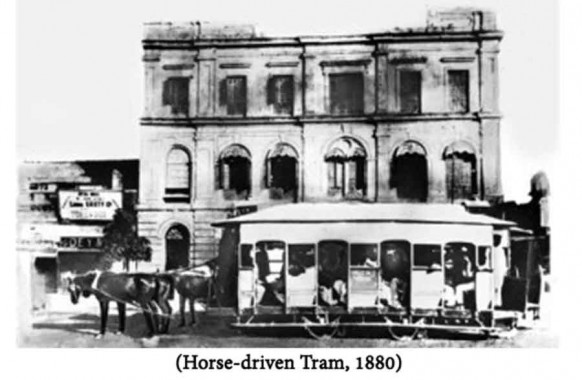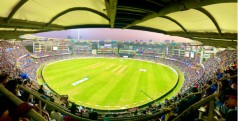




















Sunday, Jul 12, 2020 13:15 [IST]
Last Update: Sunday, Jul 12, 2020 07:50 [IST]
S. BALAKRISHNAN
I would love to visit Kolkata just for the sake of riding its trams. Running since 1880 continuously for 140 years, the tram is Kolkata’s unique and ultimate attraction. Only such an existing service in India, this gives a romantic touch to Kolkata which still retains its old world charm. It may look shabby and move sluggishly, but what matters is that it successfully meanders through Kolkata’s never-ending traffic jam and chaotic crowd. When one looks for a leisurely, peaceful, eco-friendly, comfortable and cheapest drive across Kolkata city, there is nothing to beatthe tramways with its 140 year history.
The maiden journey of Calcutta’s tram (horse-drawn) was for a distance of 3.9 km from Sealdah to Armenian Ghat on February 24 1873. However, it was discontinued on 20th November of the same year, to be revived seven years after again in the November of 1880 on the Sealdah-Bow Bazaar- Dalhousie- Armenian Ghat meter gauge route. The same year Calcutta Tramways Company (CTC) was formed and registered in London. Within two years, steam engines took over in 1882 from the horses. Another 18 years later in 1900, electric engines took over from steam engines. In 1967 the British management fled without paying salaries, as the State Government had issued an act in 1952 giving 15 years of time to take over the management. Accordingly, CTC was taken over by the West Bengal State Govt. in 1967. This formality was finally and fully completed in 1978.
CTC owns 270 tram cars, including wooden body bogies procured between 1940 and 1950.Now the ultimate luxury is AC tram cars that were introduced in 2013. With addition and deletion of routes, the Tramsnow run in 52 routes within a radius of 10 km from the city centre on a total track length of 57.17 km double track. They run on 550 V DC electricity that is converted from 6 KV AC main power and thensupplied & distributed by ten sub-stations. With a massive central workshop, seven mini depots and 8 passenger termini, CTC transports around 70,000 passengers every day and earns on an average 2.5 to 3 lakh rupees with a very moderate fare beginning from 5 rupees. Each tram unit has two bogies with a total seating capacity of 54, but can easily accommodate120 passengers during peak hours.
Coming to my own ‘tram’ experience, the tram service in Madras (now Chennai) was unfortunately closed on the midnight of 11th April 1953, just three years before my birth but as a kid I remember seeing the dead rail lines. The rail lines were left behind as recovery cost was more than their worth. Since childhood I was fascinated by a Calcutta tram photo taken by my dad in 1950 when he was working there. But the first time I saw the famed tram of Calcutta was only in 1979 when I was on a hurried & harried transit visit from Port Blair (by flight in the morning) to Madras (by train the same afternoon).Alas, I could only sight the tram and not travel in it. The dream got fulfilled only in 2014 in my 58th year! Oh, what a pity! A simple wish and it took 58long years. On our way to Sikkim we halted for three days in Kolkata and hopped on to the tram at the very first opportunity. I would have loved to travel through its entire network and in the night also but we could go only for a very short trip. As it was June, the weather was humid and the traffic was very heavy yet we enjoyed it to the hilt. So I am planning for an exclusive week-long tram trip to Kolkata duringa winter. But winter of which year, Corona Virus only can decide. I propose andthe Almighty Corona disposes! (Old photos and facts & figures, courtesy CTC website).
krishnanbala2004@yahoo.co.in / 9840917608 Whatsapp
